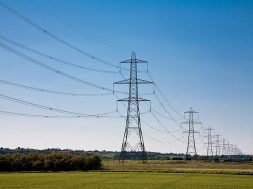
Healthy discoms, round-the-clock green energy to fuel 24×7 power supply focus areas in 2023 – EQ Mag
NEW DELHI : As the Government efforts continue to ensure 24×7 power supply for all, power distribution companies’ timely payments to electricity generating companies and round-the-clock availability of renewable energy will be focus areas in 2023.
Amid the outstanding dues of power distribution companies (discoms) hovering at around Rs 1.13 lakh crore, the Union power ministry implemented the late payment surcharge rules in June this year to ensure timely payment of dues by discoms to power generating companies (gencos) and also converted their long outstanding overdues into equated monthly installments. The initiative has helped in reducing the dues of discoms by Rs 24,680 crore to around Rs 1.13 lakh crore in the six months to November 2022.
“By and large, that’s the plan (to ensure 24×7 power for all). In 2023, all green energy, RTC RE (round the clock renewable energy) will be encouraged,” Union Power and New & Renewable Energy Minister R K Singh told PTI. He was responding to a query about the Government’s efforts to ensure 24×7 electricity supply across the country. “We made one nation one grid, enabling sale of power to any part of the country irrespective of its source of generation. All of these contributed to reduced power cost. This increased availability of power to rural areas,” he said.
On renewable energy, Singh said, “We have not calculated round-the-clock green energy proportion. But overall, roughly renewable energy proportion is around 20-25 per cent.” The minister also mentioned about strengthening the power distribution system by spending Rs 2,04,000 crore, which substantially increased power supply to rural areas. “From 12 hours in 2015 to over 22.5 hours in 2022, we increased power supply to rural areas to a great extent. It is around 23 hours in urban areas,” he said.
As part of efforts for 24×7 power supply, Singh said the focus will be mainly on rural areas as urban areas are already getting almost round-the-clock supply of electricity. In 2012, the electricity shortage was around 9 to 10 per cent and it came down to 4.5 per cent in 2013, in energy terms. It is just 0.4 per cent in 2022, meaning there is no shortage, Singh pointed out.
“It is only (in places) where discoms do not have money to purchase the power. We have made the entire nation power surplus. Our demand is 2,15,000 MW while our service capacity is 4,04,000 MW. We have surplus capacity and have strengthened the entire distribution system through transmission lines,” he said. According to experts, it is imperative to reduce losses of discoms as well as their dues towards gencos and power transmission companies for ensuring 24X7 power supply across the country.
The minister said that AT&C (Aggregate Technical & Commercial) losses reduced by almost 5 per cent in FY22 due to several measures taken by the power ministry. In the last two years, discoms’s AT&C losses were hovering at 21-22 per cent. Preliminary analysis of data for FY22 of 56 discoms contributing to more than 96 per cent of the power supply indicates the AT&C losses of discoms declined to 17 per cent from 22 per cent in FY21, as per the ministry.
The reduction in AT&C losses has resulted in reduction in the gap between Average Cost of Supply (ACS) and Average Realizable Revenue (ARR). Among other initiatives, the ministry plans to invest Rs 2.44 lakh crore to further strengthen the power transmission system in the backdrop of India’s goal of having 500 GW of renewable energy by 2030. “Robust power transmission network is the key catalyst in driving India’s 500 GW renewable energy ambition. The recently announced road map for the transmission sector addresses the urgency with which India needs to develop its transmission infra for renewable energy evacuation.
“The estimated investment need of Rs 2.44 trillion in the inter-state transmission segment spells enormous opportunity for the industry,” Sterlite Power MD Pratik Agarwal told PTI. The issues related to ROW (Right Of Way), land acquisition as well as permits and clearances need to be fast-tracked to ensure that these transmission corridors are executed in a timely manner, he noted.
Agarwal said the changing composition of installed generation capacity in the country, increase in electrification, burgeoning power demand and the push to promote manufacturing are strong tailwinds requiring a persistent thrust on investment in power transmission in the immediate and long term.













